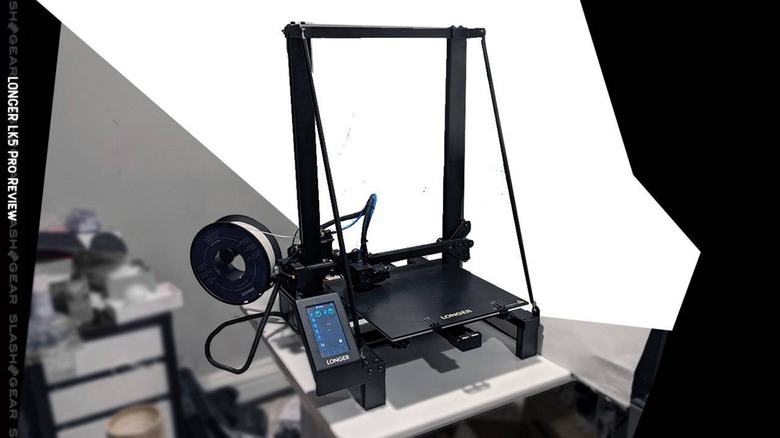LONGER LK5 Pro Review - 3D Printer For Prototyping With A Little Fiddling
The LONGER LK5 Pro is the sort of 3D printer you buy when you know how to troubleshoot. This device is a middle-ground between the pre-constructed, high-end, brand-name 3D printers that cost a lot, and the DIY 3D printers that are dirt cheap because you have to know exactly what you're doing right from the get-go.
Setup and software
Setup requires that you place the print extruder bar, the arms, and the supports. You'll need to screw each of these components together in a specific order, and you'll need to plug in connectors between the powered components. If you're uncomfortable with replacing memory sticks in your PC, this is not the 3D printer for you.
The LONGER LK5 Pro makes use of Ultimaker's Cura software for slicing and staging. You'll need to follow a few simple instructions to load settings – and you'll be able to adjust said settings at will once you've given it a go.
To transfer files to the printer to print, you'll need to use a microSD card. You can also use a USB cable to make this process happen, but it's a USB type-B connection, not a standard type-A. So unless you plan on working with a converter, don't expect to be plugging in a USB stick with print files into the USB port included with most major 3D printers by default.
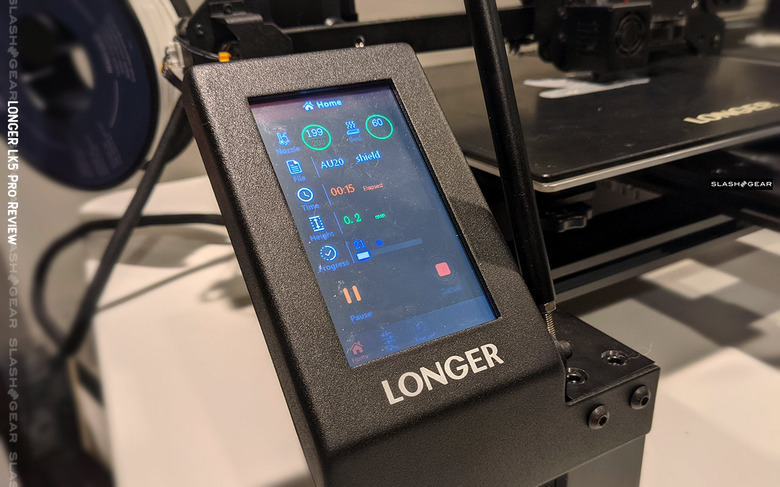
You'll also be able to make use of that USB type-B port to fiddle with the software if you wish. This is encouraged by the creators of the device – LONGER suggests that "with open-source firmware, you can try your fantastic ideas on LK5 Pro by changing the C code." We've not found a reason why changing the printer's firmware would be beneficial in any way at all, so far – but it's nice to know the company is OK with the user making adjustments on the fly.
Print Process and Repair
Printing requires that you feed a line of PLA through a mechanism that, in turn, feeds said line through a Teflon tube. At the point at which the PLA is fed into the tube, the machine has a print material detector.
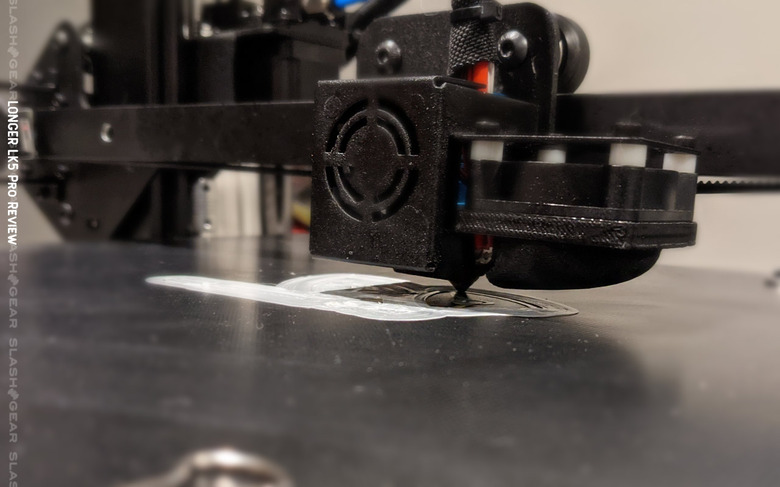
With this detector and the feed system with the tube, this printer can detect when print material is running low, halt the print until the user re-loads new material, and start again without ruining the final print product.
Because of the simple and very visible construction of the printer, print issue troubleshooting is both plausible and possible. This device is extremely accessible for repairs and adjustments.
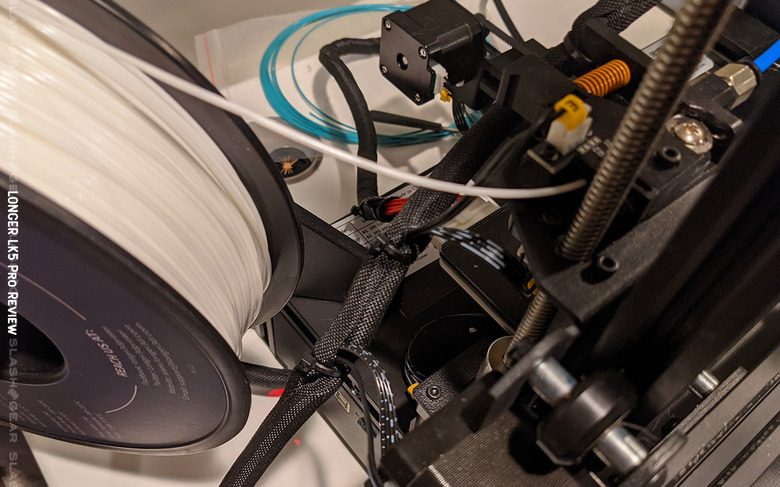
Take for example the issue I had with print hotbed height. Because I'd not taken the proper time to adjust the height of the hotbed, the distance between the print head and the hotbed was too small. A print material traffic jam was the result.
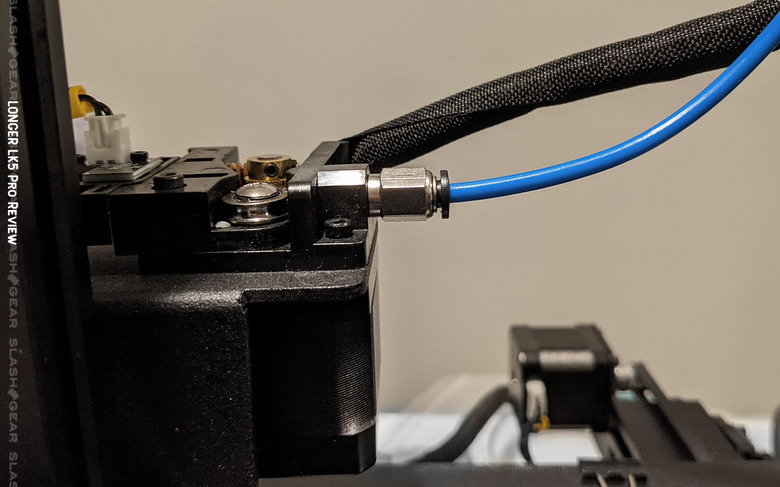
Because this device is so bare-bones and accessible, I was able to remove components and find the point at which the melted-then-hardened PLA material was jammed. Once located, I was able to heat the print head and eject the backed-up material with ease.
Print quality
As it is with most 3D printers, print quality is a direct reflection of the quality of the files used to print and the technical knowhow of the user. If this printer's print bed didn't need to be leveled – if it were automatically set – the entire process would be a lot simpler. Because of the extremely delicate nature of the 3D print process, re: X, Y, and Z extrusion of liquid-hot plastic, a print bed that's even the tiniest bit off-kilter means you'll have an uneven print at best, or a completely broken print (and temporarily inoperative printer) at worst.
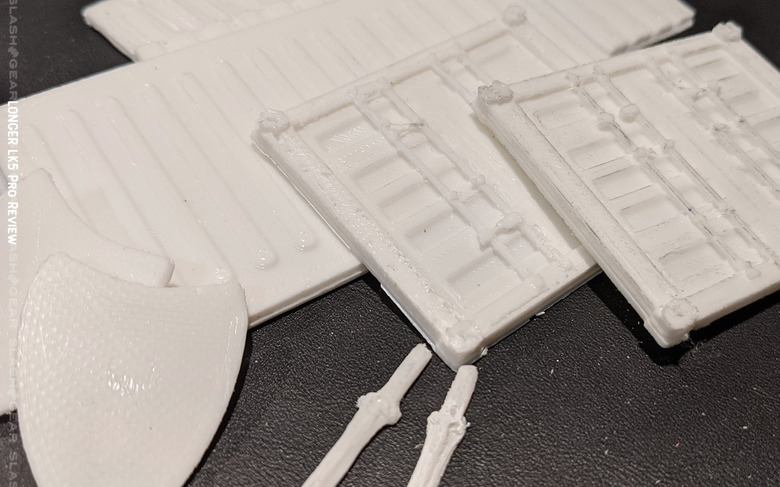
When the print bed was level, the software was correctly set up, and the 3D print files were of fine enough quality, the final products were pretty decent. We're getting precise and sharp details here just so long as all the software and hardware details are perfect.
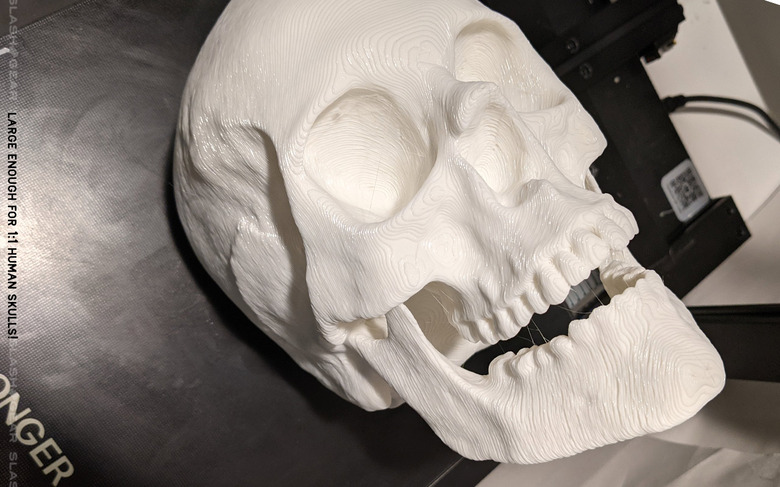
Like most extrusion printers of this sort, the real magic happens when you try to print something large. This is a 1:1 ratio human skull. It turned out pretty good!
Wrap-up
This printer is adjustable and fixable, prints with standard 1.75mm materials (like PLA, like we've tested here), and is relatively affordable. If you're looking for a decent quality PLA extrusion system and do not want to break the bank, the LONGER LK5 Pro is a decent choice.
This is more than your everyday average super-cheap low-resolution 3D printer, great for hobby users of many sorts. This is not a plug-and-play solution. Instead, it's a value option with the understanding that the user is ready to access and adjust to the process on the fly.
The LONGER LK5 PRO has a price of approximately $330 USD from the LONGER 3D website right this minute. You can also find this printer sold by LONGER on Amazon in the USA and internationally. LONGER also sells a variety of PLA filaments for around $23 USD for a single 2.2lb (1KG) spool.
